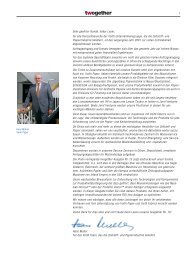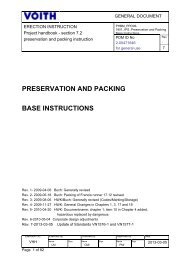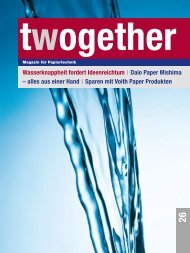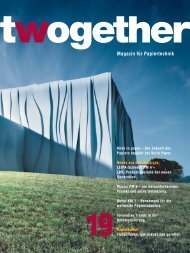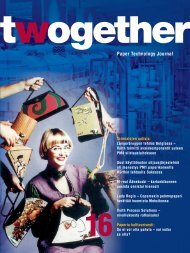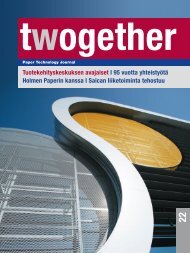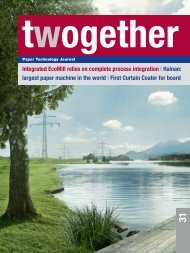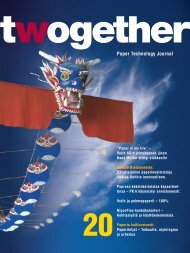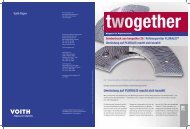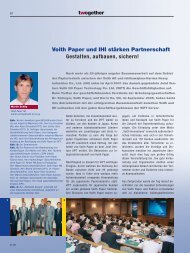Create successful ePaper yourself
Turn your PDF publications into a flip-book with our unique Google optimized e-Paper software.
66<br />
Fig. 1: Boiling<br />
vessel: Kozo branches<br />
are steamed over<br />
boiling water to make<br />
the bark easier to<br />
remove.<br />
Fig. 2: Soaking the<br />
fibre strands in river<br />
water.<br />
Fig. 3: Dried fibres in<br />
front of a farmhouse.<br />
Fig. 4: Peasant<br />
women at work with<br />
a bamboo screen.<br />
<strong>17</strong>/04<br />
1<br />
2<br />
Making Washi involves a lot of time<br />
and effort – and is, as a consequence,<br />
very expensive. The best fibres are extracted<br />
from the inner bark of the mulberry<br />
tree (Japanese Kozo), Gampi plants<br />
and the Mitsumata bush. The branches<br />
are collected in the winter, after the<br />
leaves have fallen, and are then sawn into<br />
1 metre long sections and steamed above<br />
large vessels filled with boiling water.<br />
The bark is removed and soaked in water<br />
for one day, contaminants are separated<br />
off and the white fibres are dried. To<br />
make them soft, they are soaked in water<br />
again for many hours and later boiled<br />
with potash. After washing out the lye,<br />
the last dark pinholes are separated from<br />
the fibres – a task that is entrusted in<br />
Japan to female workers.<br />
The fibre strands are then spread out on<br />
a cherrywood board and beaten with a<br />
broad wooden stick. After another washing<br />
phase the purified fibres are stirred<br />
into water and sheets of paper are<br />
scooped out one by one with the aid of<br />
bamboo screens. Only the skilled craftsman<br />
has the knack of plunging the screen<br />
3



